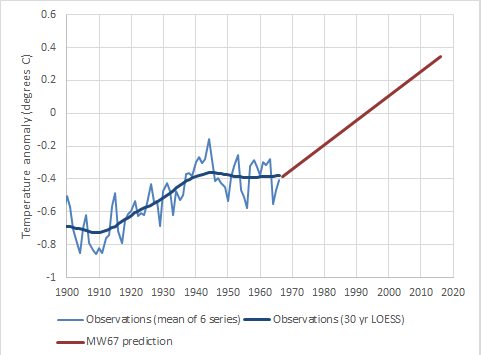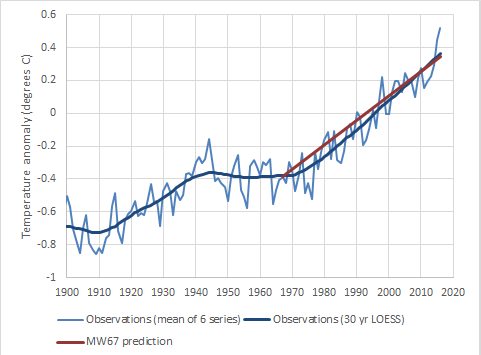I ran across this tidbit of information on Facebook today, posted by my husband John Knox, who is also a meteorologist. It discusses the 1967 prediction of global warming by Manabe and Wetherald, in a time period when the earth was slowly cooling. You probably don’t know their names, but they were well-known in atmospheric sciences as thoughtful and careful scientists. Climatologists have known for at least 100 years that increasing greenhouse gases in the atmosphere will raise the earth’s temperature–this is a great example showing how accurate the estimates were.
1967: Manabe and Wetherald, in the Journal of the Atmospheric Sciences, publish the first relatively realistic estimates of global climate change due to rising greenhouse gases. Their estimate, based on a climate model: a doubling of CO2 would lead to a warming of 2.36 degrees Celsius.
This prediction was made during a cold period, with slightly decreasing planetary surface temperatures.
How good a prediction was it? The red line is the Manabe-Wetherald prediction. The blue line is observed temperatures.
The first image shows you how unlikely the warming would have seemed to be back in 1967, unless you understood–as atmospheric scientists had for a decade and more–the effect of greenhouse gases on climate.
The second image shows you how the prediction played out through 2016, based on the additional amount of CO2 put into the atmosphere after 1967.
That’s a remarkably accurate 50-year prediction, isn’t it? You might wonder why all you seem to hear is that the climate models are wrong and that the climate modelers are just a bunch of liars who lie to make money. Consider the possibility that these claims are a giant example of projection.

